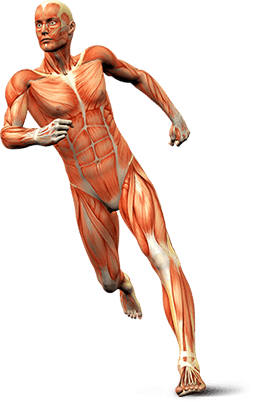Articular Cartilage Injury (Osteochondral Defect)
Articular or hyaline cartilage is the tissue lining the surface of the two bones in the knee joint. Cartilage helps the bones move smoothly against each other and can withstand the weight of the body during activities such as running and jumping. Articular cartilage does not have a direct blood supply to it so has less capacity to repair itself. Once the cartilage is torn it will not heal easily and can lead to degeneration of the articular surface, leading to development of osteoarthritis.
The damage in articular cartilage can affect people of all ages. It can be damaged by trauma such as accidents, mechanical injury such as a fall, or from degenerative joint disease (osteoarthritis) occurring in older people.
Patients with articular cartilage damage experience symptoms such as joint pain, swelling, stiffness, and a decrease in range of motion of the knee. Damaged cartilage needs to be replaced with healthy cartilage and the procedure is known as cartilage replacement. It is a surgical procedure performed to replace the worn out cartilage and is usually performed to treat patients with small areas of cartilage damage usually caused by sports or traumatic injuries. It is not indicated for those patients who have advanced arthritis of knee.
Cartilage replacement helps relieve pain, restore normal function, and can delay or prevent the onset of arthritis. The goal of cartilage replacement procedures is to stimulate growth of new hyaline cartilage. Various arthroscopic procedures involved in cartilage replacement include:
- Microfracture
- Drilling
- Abrasion Arthroplasty
- Autologous chondrocyte implantation (ACI)
- Osteochondral Autograft Transplantation
Carticel®
Carticel® is a product consisting of autologous cultured chondrocytes that is used to repair damaged knee cartilage. Autologous cultured chondrocytes are nothing but patient's own cartilage cells that are harvested and then cultured in the laboratory, to increase their number. These cells are then implanted into the articular cartilage defects of the knee. Following implantation these chondrocytes help in forming a new healthy cartilage.
Carticel® is usually indicated in patients who have shown poor response to their previous arthroscopic surgical procedures such as debridement, microfracture, drilling/abrasion arthroplasty, or osteochondral allograft or autograft. The use of Carticel® is considered based upon the condition of your joint, accompanying pathologies, size, number and extent of the defects.
Carticel® is usually used in combination with debridement, placement of a periosteal flap and rehabilitation. It helps reduce pain and improve daily and sports activities.
Indications & contraindications
Carticel® is not indicated in patients with generalized osteoarthritis. If total meniscectomy procedure had been done before, absent meniscus should be reconstructed before or along with Carticel® implantation.
Carticel® is contraindicated in patients with hypersensitivity to medications such as gentamicin and other aminoglycosides or materials of bovine origin. It is also contraindicated if you have any other medical problems, especially cancer near the injured knee.
Safety Information
The presence of other conditions such as meniscal tears, joint instability, should be evaluated and corrected before or along with Carticel® implantation. There is always a risk of disease transmission to the health care provider handling this product as it does not undergo routine tests to check for communicable infectious diseases.
Adverse Effects
The most common adverse effects that occur after Carticel® implantation include a crackling sound or pain on bending the knee and stiffness or catching sensation of the knee. The most common serious adverse events include arthrofibrosis, joint adhesions, graft overgrowth, chondromalacia (abnormal degeneration of cartilage) or chondrosis, cartilage injury, graft complications, meniscal lesion, graft delamination, and osteoarthritis.
Osteochondral Autograft Transplant System
Osteochondral autograft transplant system (OATS) is a grafting technique indicated in treatment of focal articular cartilage defects (area 2 cm) where the grafts are used to replace the damaged cartilage tissue. It is the procedure for repairing articular cartilage defects and to restore normal functioning of the knee joint.
The damage to articular cartilage can be caused by trauma such as accidents, mechanical injury such as a fall, or from degenerative joint disease (osteoarthritis) occurring in older people.
This grafting technique is indicated in patients whose articular cartilage damage is less than 2 cm in diameter. This type of damage is seen in individuals aged less than 50 years. In this procedure, the plugs of hyaline cartilage is harvested from a healthy, non weight-bearing joint of the same individual (autograft) and transplanted to the damaged area in a mosaic pattern. The cells in the articular cartilage grow in the damaged area to promote healing. This procedure can be carried out arthroscopically or through open surgery.
Osteochondral Allograft
Osteochondral allograft is one of the cartilage grafting techniques indicated in patients with articular cartilage damage in the knee to restore normal functioning of the joint. Cartilage grafting is a surgical procedure to replace the damaged cartilage with healthy cartilage taken from a donor or from the same patient harvested at the site that takes less weight of the body.
Osteochondral allograft is a grafting technique in which the damaged cartilage is replaced by a healthy cartilage taken from a donor or cadaver. This procedure is indicated in patients with larger articular cartilage defects and is done through open surgical procedure. In this procedure, the hyaline cartilage collected from cadaver is sterilized, prepared, and assessed for possibility of disease transmission. Then the allograft along with subchondral bone is transplanted into the damaged area. The graft is held to the damaged area with the help of metal screws or pins.
The main disadvantage of this method is limited availability of donor grafts. Other factors limiting the use of this technique are possibility of disease transmissions. This procedure is not recommended for patients with osteoarthritis.

















